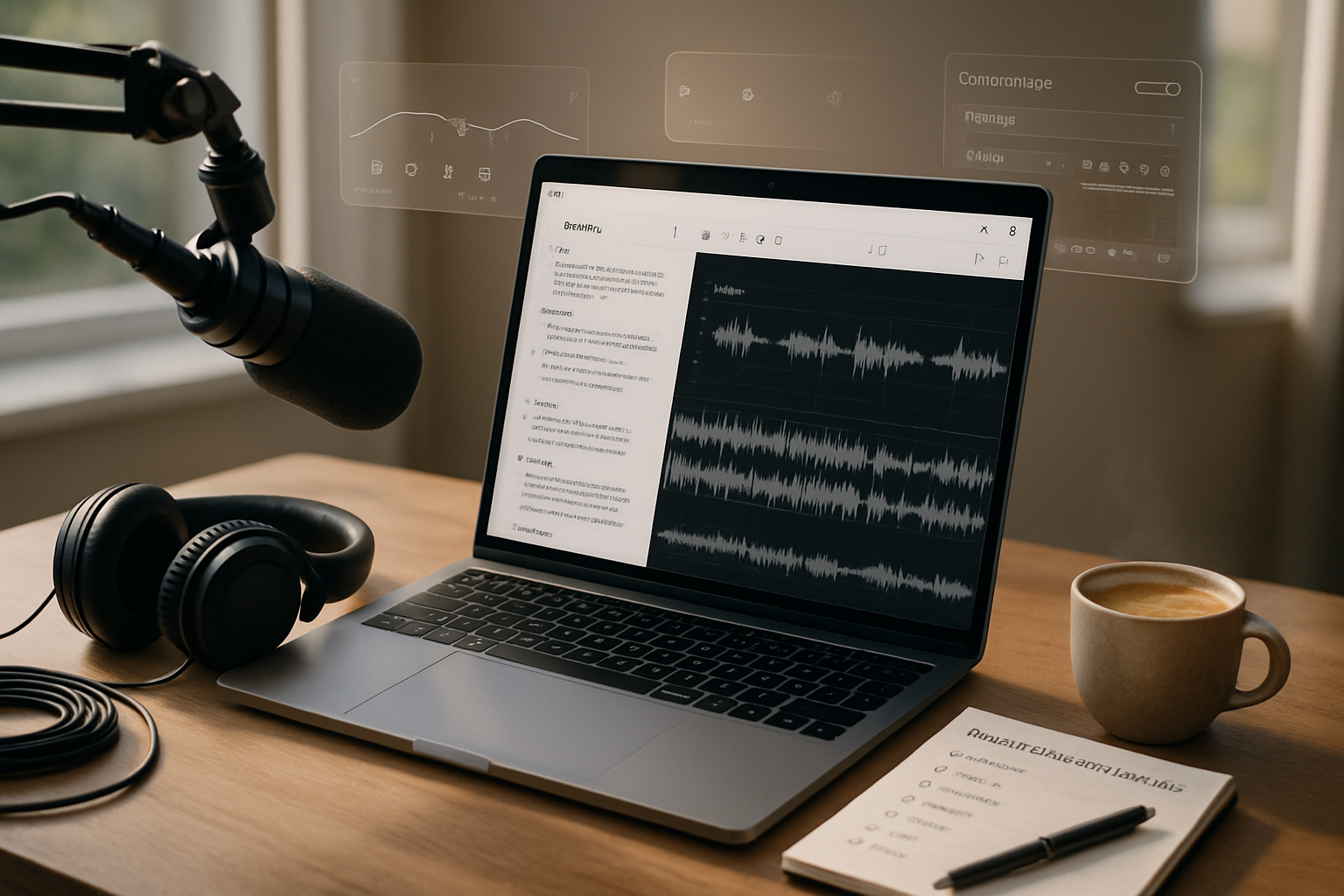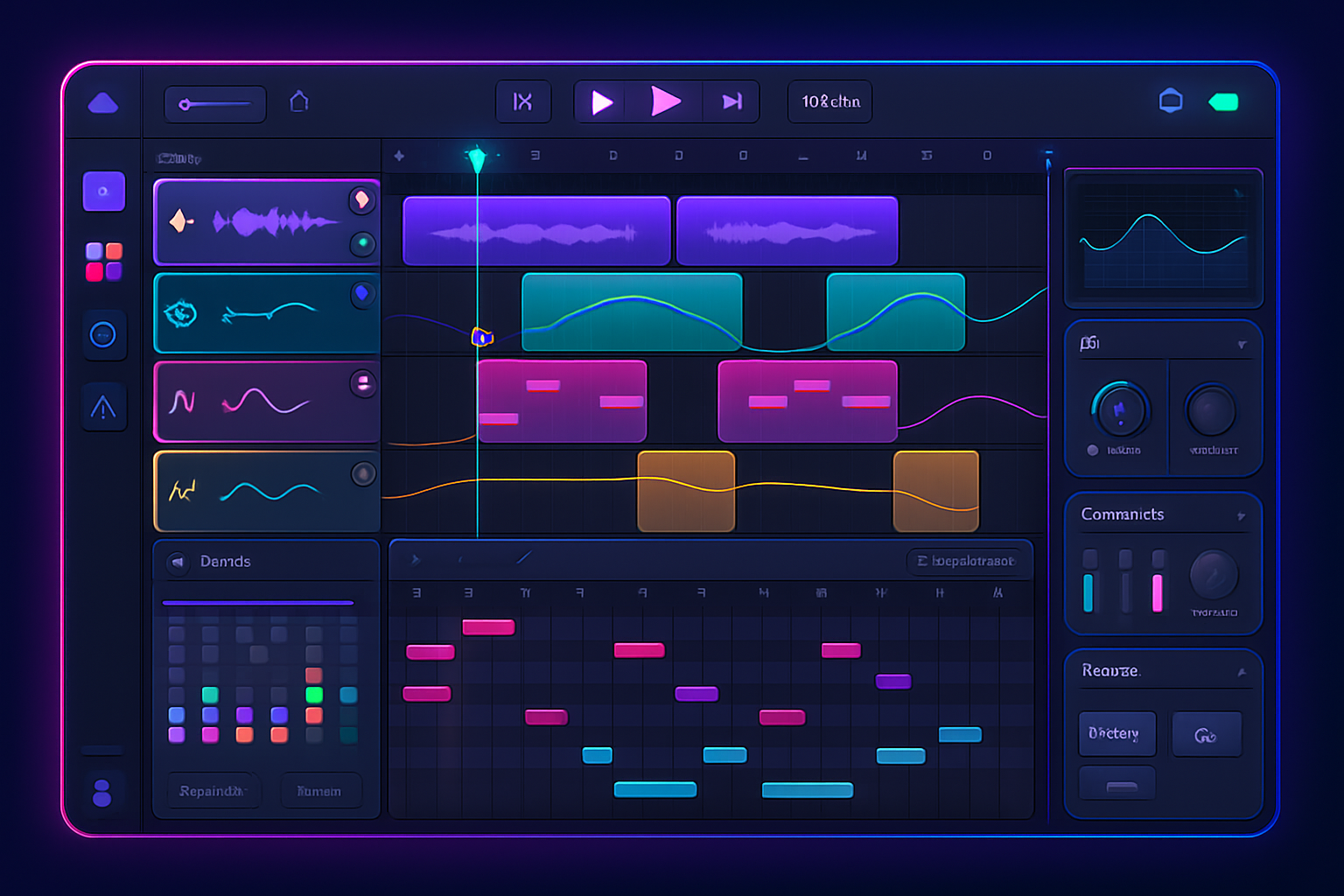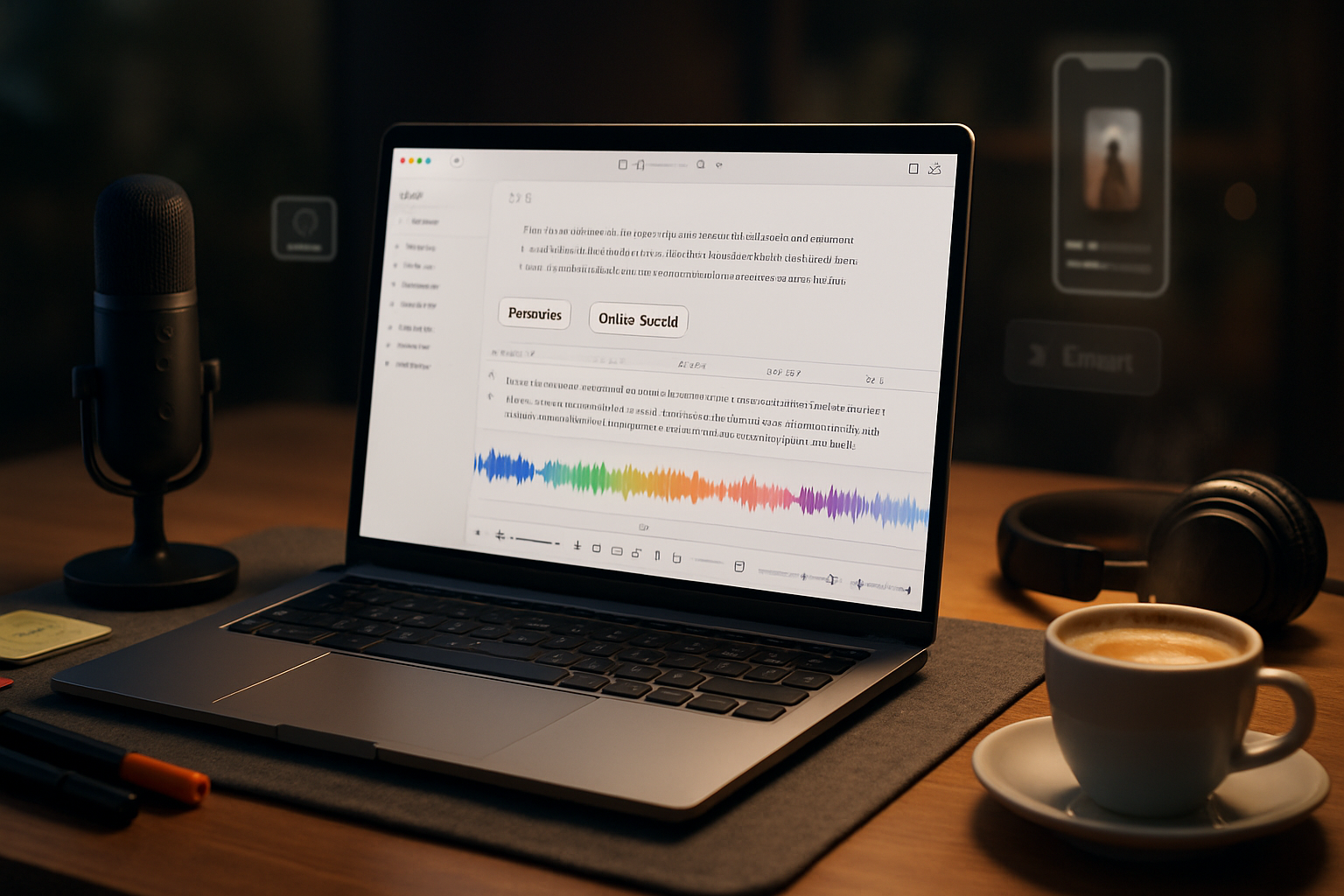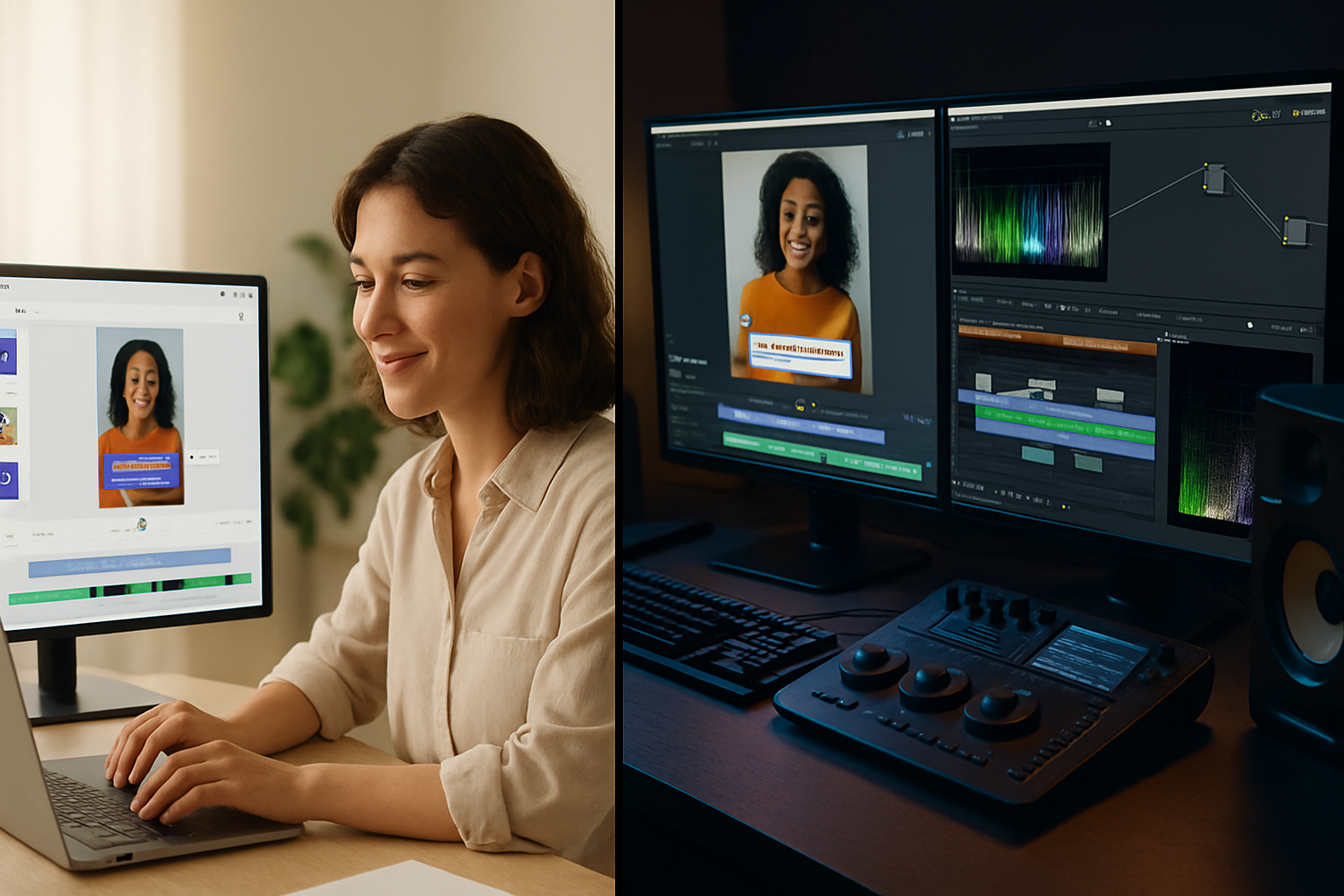· creativity · 7 min read
Soundtrap vs. The Competition: Is It Really the Best Audio Editing Tool for Freelancers?
A practical, freelancer-focused comparison of Soundtrap and its main competitors. Learn where Soundtrap shines, where it doesn't, and which tool fits specific freelance workflows (podcasting, music, client deliverables).

Outcome first: by the end of this post you’ll know whether Soundtrap is the right audio tool for your freelance studio, and you’ll have a short, actionable decision checklist to choose the best alternative if it isn’t.
Why this matters: as a freelancer you juggle deadlines, clients, and budgets. The audio tool you choose affects your speed, the quality you can deliver, and sometimes your income. Pick the wrong one and hours vanish into format errors, plugin hunts, and exports that don’t match client specs.
Quick verdict - short version
- If you need cross-platform, browser-based collaboration, fast turnarounds, and an easy, low-friction way to deliver clean edits, Soundtrap is one of the best picks. It shines on accessibility and teamwork.
- If you need advanced mixing, VST/plugin flexibility, deeper restoration tools, or full offline control, other tools (Adobe Audition, Reaper, Audacity, Hindenburg, Descript) will serve you better.
Read on for the why - feature-by-feature, price-aware, and with freelancer-oriented recommendations.
How to read the comparisons below
I’ll evaluate each dimension that matters to freelancers: collaboration, editing power, audio quality & formats, effects/plugins, remote interviews & publishing, learning curve, and pricing/value. After that you’ll get a short decision checklist and scenario-based recommendations.
- Collaboration & portability - Soundtrap’s biggest card
Why it matters: clients and co-creators aren’t always local. You want a workflow that avoids bouncing files, version chaos, and platform incompatibilities.
- Soundtrap - built for the cloud. Real-time collaboration, versioning, autosave, and project links that others can open in a browser. No platform gate. This is massive for remote interviews, client review, and co-writing sessions.
- Competitors:
- Descript - also cloud-friendly and collaborative; strong when you need transcription-centered workflows and fast edits.
- Audacity, Reaper, Adobe Audition, GarageBand, Hindenburg - desktop-first. Collaboration requires manual file exchange (ODT, stems, or cloud-sync services) and can get messy.
Takeaway: if you collaborate frequently or hand projects to non-technical clients, Soundtrap wins here.
- Editing power & workflow
Why it matters: editing speed equals billable hours.
- Soundtrap - multitrack editing, loops, basic audio processing, punch-in recording, and intuitive mobile/browser workflows. Editing is visual and approachable, especially for music and podcast comping.
- Adobe Audition - professional editing suite - spectral repair, adaptive noise reduction, diagnostics, advanced batch processing, and deep clip gain tools.
- Reaper - extremely powerful DAW with flexible routing, scripting, and a huge community of user-created extensions. Lightweight on CPU but deep in capability.
- Audacity - solid waveform editing for quick tasks, but fewer modern conveniences and UI polish.
- Descript - transforms text-based editing into audio edits. For podcasting this can save huge time - correct words and the audio follows.
- Hindenburg - purpose-built for journalists and podcasters, with a story-focused workflow (scenes, voice profiles, loudness matching).
Takeaway: Soundtrap is fast for straightforward editing. For surgical restoration, advanced automation, or complex mixing, pick Adobe Audition or Reaper.
- Audio quality & export formats
Why it matters: clients might request WAV/48k/24-bit stems, broadcast-safe loudness, or lossless masters.
- Soundtrap - exports common formats (WAV, MP3). For most podcast and quick music work that’s fine. Check the current spec page for bit-depth/sample-rate limits if you need mastering-grade exports.
- Adobe Audition and Reaper - offer flexible sample rates, bit depths, multichannel export, and advanced metering tools for broadcast loudness standards.
- Audacity - supports WAV and many formats, but multi-track mixdowns require careful setup.
Takeaway: for pro mastering or broadcast deliverables verify Soundtrap’s export specs; otherwise its exports cover most freelance needs.
- Effects, plugins and extensibility
Why it matters: plugin support means you can bring specialized tools, or reuse client presets.
- Soundtrap - provides built-in effects and instrument libraries. It’s not known for third-party VST/AU plugin hosting - expect a closed ecosystem compared to desktop DAWs.
- Reaper and Adobe Audition - full VST/AU support. If you rely on 3rd-party noise reduction, compressors, or specialty plugins, a desktop DAW is safer.
- Audacity - limited plugin support and an older plugin architecture.
Takeaway: if your work depends on specific plugins (iZotope RX, FabFilter, etc.), choose a desktop DAW.
- Remote interviews, recording guests, and podcast-specific features
Why it matters: remote guests and multitrack interview recording are very common in freelance podcast workflows.
- Soundtrap - built-in remote recording and easy multitrack session sharing. Great for clients who can’t or won’t install software.
- Descript - excellent remote recording; adds transcription, filler-word removal, and overdub - a different paradigm that accelerates podcast editing.
- Riverside.fm / Zencastr / SquadCast (other niche tools) - specialized for high-quality remote recordings and local-recording per participant, then upload.
Takeaway: for browser-based guest recording where friction-free access is key, Soundtrap is a top choice. If you need studio-grade per-participant files, consider Riverside or a desktop solution.
- Learning curve & client handoff
Why it matters: freelancers often need to hand off material to clients or collaborators with varying skill.
- Soundtrap - shallow learning curve. Non-technical clients can join a session and make basic edits. Great for white-glove handoffs.
- Adobe Audition / Reaper - steeper learning curves; great for technical collaborators but intimidating for clients.
Takeaway: Soundtrap reduces friction for client review and simple edits.
- Pricing & value for freelancers
Why it matters: recurring subscriptions cut into margins.
- Soundtrap - offers a free tier with limitations and paid plans that unlock features and storage. Pricing structures change; check the official site for up-to-date tiers and limits:
- Audacity - free and open-source - attractive for tight budgets though lacking collaboration features:
- Adobe Audition - subscription-based (Adobe Creative Cloud); strong pro tools if you bill at rates that justify it:
- Reaper - low-cost one-time license with a very generous evaluation period - excellent value:
- Descript - subscription with AI-enabled transcription and overdub; pricing varies with usage:
- GarageBand - free on macOS, very capable for quick music work:
- Hindenburg - targeted pricing for journalists/podcasters:
Takeaway: Soundtrap is a subscription play. Compare the productivity gains (reduced time on projects, smoother client handoffs) against recurring cost. For many freelancers, the time-savings of a cloud workflow offsets the subscription.
Scenario-based recommendations (practical)
- You mostly edit interviews and need clients to review projects in-browser - choose Soundtrap.
- You do a lot of voice restoration, precise spectral editing, or broadcast mixing - Adobe Audition or iZotope RX + desktop DAW.
- You need a low-cost, local solution and are comfortable packaging stems for clients - Audacity or Reaper (Reaper is excellent value if you’ll invest time learning it).
- You edit podcasts where text-driven edits (cutting words, removing ums) will save huge time - try Descript.
- You produce music, need third-party synths and VST effects, and want full control over routing and automation - Reaper or another full-featured DAW.
A short decision checklist (quick use at your laptop)
- Do you need browser-based collaboration or client review? If yes → Soundtrap or Descript.
- Do you rely on third-party plugins or advanced mastering tools? If yes → Reaper or Adobe Audition.
- Is your priority minimizing software cost and you can manage file handoffs? If yes → Audacity or Reaper.
- Is text-based editing (edit the transcript, edit the audio) a workflow win for you? If yes → Descript.
- Do you need broadcast loudness certs, multichannel export, or in-depth restoration? If yes → Adobe Audition (+ iZotope RX if needed).
Checklist result interpretation: pick the first Y that matches your priority.
Real freelancers’ tradeoffs (what you’ll actually experience)
- Speed vs control - cloud tools like Soundtrap give speed and fewer headaches. Desktop tools give control and plugin power.
- Client friction - handing a client a link beats sending a 200MB ZIP. Always a plus when budgets and patience are limited.
- Backup and ownership - rely on local backups even if you use cloud tools. Always export masters and stems.
Final recommendation - the practical answer
Soundtrap is one of the best audio editing tools for freelancers whose priorities are: fast delivery, platform-agnostic collaboration, and low-friction client interactions. It reduces administrative overhead and shortens turnaround times.
But it is not the single best tool for every freelance audio workflow. If your work demands advanced restoration, high-end mastering, third-party plugin chains, or offline-only control, choose a desktop DAW (Adobe Audition, Reaper) or a specialist (iZotope RX for repair, Riverside for studio-grade remote recordings).
Decide by outcome: want faster client wins and fewer technical hurdles? Go Soundtrap. Want ultimate sonic control and industry-standard restoration? Go desktop.
Want a quick next step? Try a small test project: import a real client file, edit it in Soundtrap and in one desktop DAW, time yourself, compare outputs, and factor in client feedback. The one that gets you paid with the least friction is your winner.
References and further reading
- Soundtrap: https://www.soundtrap.com/
- Audacity: https://www.audacityteam.org/
- Adobe Audition: https://www.adobe.com/products/audition.html
- Reaper: https://www.reaper.fm/
- Descript: https://www.descript.com/
- GarageBand: https://www.apple.com/mac/garageband/
- Hindenburg: https://hindenburg.com/



